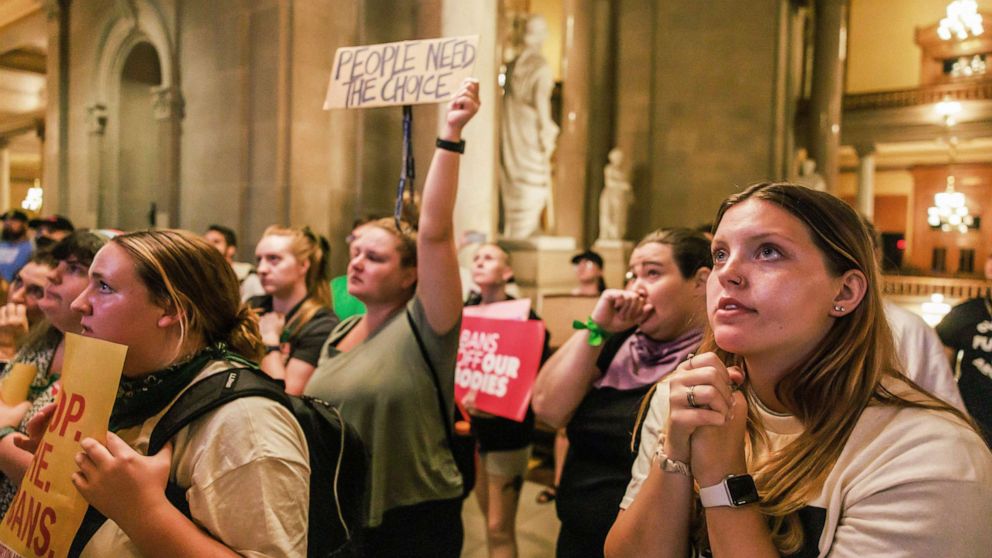
(NEW YORK) — Twenty-one years after the Sept. 11 terrorist attacks, the families who lost loved ones at the World Trade Center and are still seeking to hold them one last time.
For these families, who have yet to receive any remains of their loved ones, the closest they can get is a special section of the National September 11 Memorial & Museum located at what was once the foundation of the north tower of the World Trade Center.
There, behind a blue wall with the message “No day shall erase you from the memory of time,” lies the remains of unidentified victims, along with a room that only victims’ families can access to pay their respects. It includes a window that looks on the rows of cabinets that contain the remains.
“It’s designed in a way that if some families aren’t ready, they can still be close to the remains but not actually view in,” Jennifer Odien, a World Trade Center anthropologist at the New York City Office of Chief Medical Examiner (OCME), told ABC News’ “Start Here.”
While the museum’s repository serves as a somber memorial ground for those families that have no physical proof that their loved ones perished on 9/11, the forensic team at OCME has been testing samples of those remains to try to make positive identifications in their own lab in Manhattan.
And even though the team said the task has been daunting for 21 years and counting due to the sheer scope of work, they are still determined to give these families closure.
There were 2,753 peopled killed at the World Trade Center on Sept. 11, 2001. The victims include passengers on American Airlines Flight 11 and United Airlines Flight 175, first responders and people who worked in the towers. The bodies of the victims were so badly degraded by the explosion and collapse of the towers that remains were still being found as late as 2006, according to OCME.
As of Sept. 1, 1,647, roughly 60%, of the total number of victims, have been identified, according to OCME. The last two recent identifications were made last year. There are 1,106 victims who remain unidentified.
Mark Desire, the assistant director of OCME’s department of forensic biology, told “Start Here” that he went straight to the World Trade Center when the attacks happened and escaped its collapse. The next day he and his team went back to their labs to begin their work assessing the deaths.
“We were beat up and bruised, but this was the biggest thing we had ever seen. There was no way it was going to keep us away,” he said.
Desire said the heat, fire, jet fuel, water, sunlight, mold and bacteria present following the attacks has left many of the remains extremely fragile for analysis so his team has had to grind up tiny pieces of bone to extract DNA.
“Some of these fragments are so small, you get one shot,” he said.
One of the struggles that Desire said his team has had to face is communicating with the families who are waiting for confirmations that remains have matched a loved one.
Every year, the forensics team meets with families on Sept. 10 to give them an update.
“It’s been 21 years. You know, [the parents are] getting up there in age, and when we meet with them they ask if we can promise that…we make sure that the remains get to because all these parents want to do is hold their child again before they die,” he said.
Even on the occasions when the OCME team is successful and report their findings to a family, emotions are still strong, according to Desire.
Carl Gajewski, a DNA lab supervisor at OCME, recalled an instance when the team revealed they made an identification of a man who died on 9/11 just as his family had traveled to New York from overseas. The forensics team delivered the news in person through an interpreter.
“You see the interpreter’s face, because she realizes in that moment what she’s, what’s happening,” he told “Start Here.” “There was just this visceral release of energy from the mother and father. I think it was like a shockwave that went through us all. I’ll never forget it. And in the end, we were all like crying and hugging and they were hugging us. And that’s a moment I’ll never forget in my life.”
Desire said the office has upgraded its tools and resources with the latest technology and has worked with other scientists around the world to help reach their goal.
And even if his team identifies the hundreds of remains still unaccounted for, Desire acknowledged that no amount of science can ever fill the void that was left behind in the families’ hearts.
“We provide answers. We provide here’s something physical that you’re now able to have a whatever kind of ceremony, reflection, whatever you choose. It’s our job. Our job is, our job isn’t to bring closure. That’s up to the family to decide,” he said.
Copyright © 2022, ABC Audio. All rights reserved.









